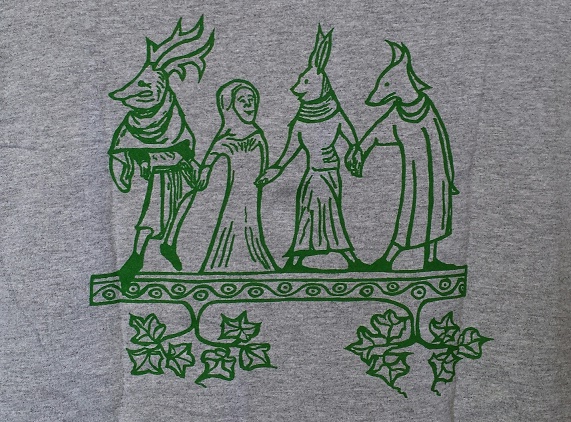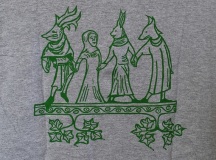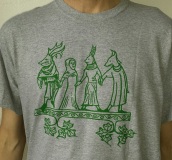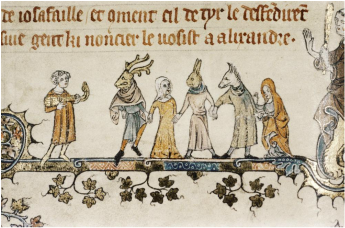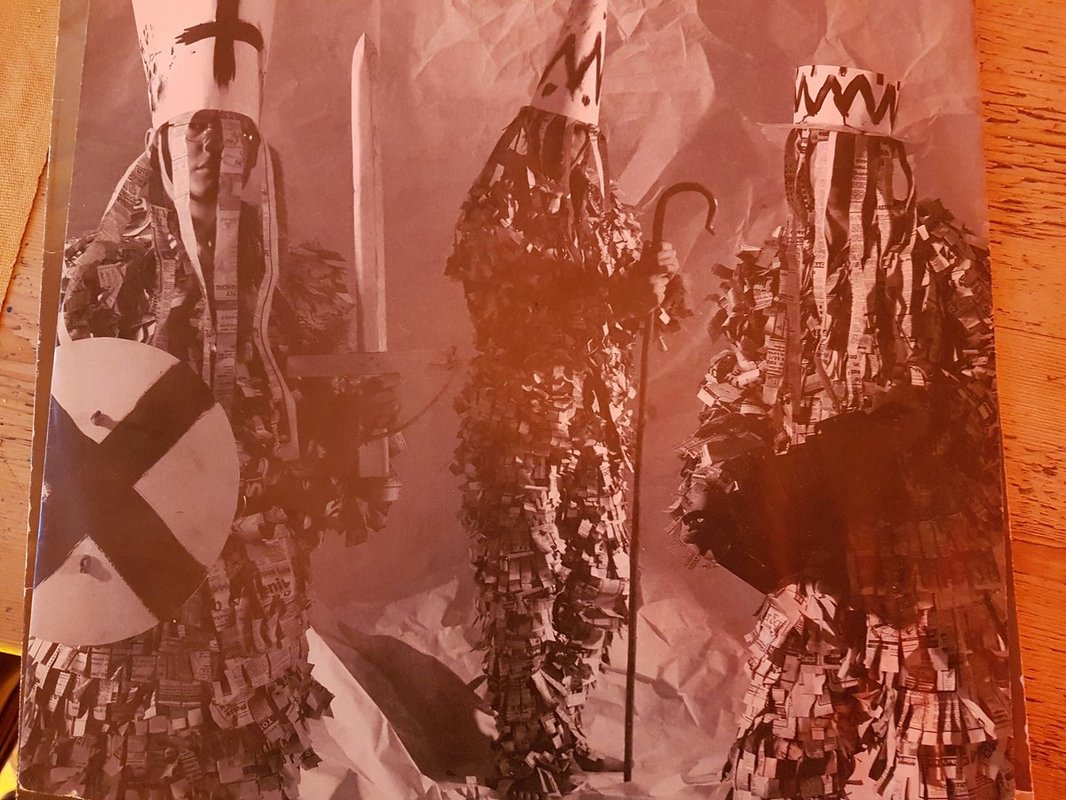Mummers plays were peripatetic performances involving masks, often held in pubs and private houses rather traditional theatres. They were said to be performed in the approach to Christmas as a way of raising extra money. An element of disguise or the wearing of masks was sometimes used to conceal the identity of the performers, which is shared with other animal disguise customs. They are usually comedic and involve a resurrection theme.
This design is an adapted fragment from an illuminated Flemish manuscript of Jehan de Grise, Romance of Alexander, 1338-44. The original can be found in the Bodleian Library, Oxford (MS Bodleian 264, fol. 21v). It illustrates various masked figures (stag, rabbit, wolf) holding hands, but also includes a nun wearing a cowl. That such rituals were frowned upon by the formal church is evident in that the original manuscript also shows, just out of the fragment that I have selected, a monk brandishing a club and holding his hand up in a gesture indicating that the performance should stop. The stag in particular has shamanic and pagan associations, and its’ invocation may have been particularly threatening.
One of the more arresting modern images of the tradition comes from the inside sleeve of XTC's third album from 1983, titled Mummer.
The tradition has also been depicted in a number of important works in English litersture. A MidSummer's Night Dream includes a group of mummers consiting of Bottom, Peter Quince, Snug and Flute performing a piece titled "Pyramus and Thisbe" as part of a wedding celebration. Thomas Hardy's novel The Return of the Native (1878) has a fictional depiction of a mummers' play on Edgon Heath. It was based, apparently, on experiences from his childhood. "Ah, the mummers, the mummers!" cried several guests at once. "Clear a space for the mummers."

